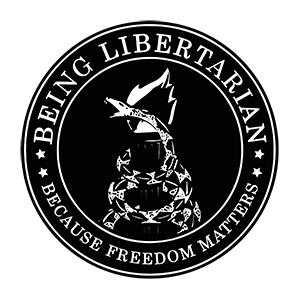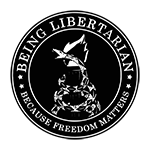In mid-2018, diversity trainer Robin DiAngelo published White Fragility. Since then it has repeatedly made it back onto the bestseller list, most recently after the Black Lives Matter protests following the death of George Floyd. The book provides an easy introduction into an increasingly popular set of ideas that must be understood and responded to.
The book provides an explanation of the theory of “white fragility” as well as ideas critical of “whiteness” and that strange second definition of racism. A book about why racism and white supremacy are bad might not seem so harmful. Just about everyone reading this can agree that both of those are bad. But when words are redefined to mean different things, you will soon find that much of what you stand for has become “white supremacist.”
This is why a review of this book is not out of place on a libertarian website. According to its contents, advocating for individual rights reinforces white supremacy, and therefore a campaign against white supremacy from this perspective includes a campaign against liberty.
Racism: A System, Not an Act
Again, most everyone reading this can agree that racism, as defined by most people, is a bad thing. But not all of us can agree that racism, as defined in White Fragility (we’ll label this racismWF) is necessarily a bad thing.
In Chapter 2, DiAngelo defines prejudice as “pre-judgement about another person based on the social groups to which that person belongs.” There isn’t much to object to with this definition. She adds that all humans have prejudice. This is true as well. Since we cannot possibly know everything about everyone, we naturally tend to fill in the gaps by assuming things about individual people based on social groups they are a part of.
She then defines discrimination as “action based on prejudice” (emphasis in original). This definition is generally accepted by most people, though it is worth remembering that to discriminate can also mean simply to choose one thing over another. When I cast a vote, I am discriminating against those I didn’t vote for. But when most people think discrimination, they give it the negative connotation that DiAngelo does, thinking specifically of unfair discrimination based on race or certain other innate characteristics.
DiAngelo then moves on to provide her definition of racism (racismWF):
When a racial group’s collective prejudice is backed by the power of legal authority and institutional control, it is transformed into racism, a far-reaching system that functions independently from the intentions or self-images of individual actors.
You may notice that her definition is not an event, or an action, but a system. An employer refusing to hire someone because they are of a different race is not an example of racismWF. If the employer is white (and only if the employer is white), it can be considered a symptom or part of the system that is racismWF. And racismWF is not so much a system that declares people with white skin as superior to everyone else, but rather that whiteness is superior to nonwhiteness.
Throughout the book, DiAngelo puts herself on a pedestal, as the enlightened thinker teaching the white masses that they are innately racist, but then for some reason seems confused that people get upset when she calls them racist. At one point, she seems to understand that the average person understands being racist as being prejudiced against an entire race and discriminating against them. But she nonetheless remains surprised that people are offended when she labels them racist.
The Case For White Racial Collectivism
Viewed through DiAngelo’s collectivist lens with racismWF as a system, the clear conclusion is that the white collective is harming the black collective. And this is one of the significant problems with this worldview. It is unapologetically collectivist. She criticizes individualism as a bad thing (and as part of whiteness and white supremacy). She sees it as a negative thing that white people see themselves as individuals, and not as a racial collective.
In fact, DiAngelo makes it clear that she wants white people to define themselves as a single racial collective, and that her job through diversity training is to remove the individualist perspective. If she can successfully remove individualism, she believes people within the white collective will begin to see why they as a collective entity are promoting racismWF against the black collective.
Whiteness
It is this idea of whiteness that is especially harmful. Most white people do not see themselves as part of a racial collective. They do not have any concept of whiteness or white identity. DiAngelo and others argue that this is because it is the standard, and reinforced through racismWF at the expense of other identities.
But what exactly does she mean by whiteness? Her definition is equivalent to that of the (taxpayer-funded) Smithsonian National Museum of African American History and Culture. They define whiteness as the following:
Whiteness and white racialized identity refer to the way that white people, their customs, culture, and beliefs operate as the standard by which all other groups of are [sic] compared. Whiteness is also at the core of understanding race in America. Whiteness and the normalization of white racial identity throughout America’s history have created a culture where nonwhite persons are seen as inferior or abnormal.
When they talk about whiteness and race, they are including culture. To say that libertarianism and Austrian economics (products of Europe) are objectively superior ideas is to say that white ideas (and therefore whiteness) is superior to nonwhiteness. To say that the ideas behind the Declaration of Independence should be upheld in America above other ideas would be reinforcing whiteness over nonwhiteness, and therefore white supremacy. To merely accept English as the standard in America, without any government enforcement, would be white supremacist.
Tabula Rasa
Though it is never mentioned, the book heavily implies the idea of tabula rasa, an idea that Steven Pinker thoroughly refutes in his book The Blank Slate. Reality appears to be entirely a numbers game. If a neighborhood is predominantly white, that is white supremacist. If a business has not achieved complete parity of every race, it is white supremacist.
Thomas Sowell has devoted numerous books to the problems of using parity as a basis. Unequal outcomes are to be expected. But remember that although unequal outcomes may not be caused by racism, they are, by definition, a symptom of racismWF.
Because whiteness includes cultural norms and the concept of objective standards, DiAngelo’s ideas are a threat to liberty. A Christian organization could not possibly be allowed to exist. Christianity is a part of whiteness, and therefore white supremacist. Pretty soon it becomes easy to see how this worldview could easily justify the state regulating every single bit of life until white supremacy is defeated. But when certain ideas and a sense of individuality are considered part of white supremacy, a future without white supremacy seems pretty dystopian and hostile to liberty.
Should You Read It?
Yes. You should read the great Austrian economists first. And then perhaps the entire catalog at Liberty Fund and the great classics. But then, if you find that you want to try to understand this worldview, this book is the best place to start. It is written for the layman, and DiAngelo does take the time to properly explain her worldview, as flawed as it may be.









Would you say that DiAngelo equivocates between the two different definitions in places in her arguments? By doing so, enabling the transfer of the negative connotations from the one meaning onto the other one?
Comments are closed.